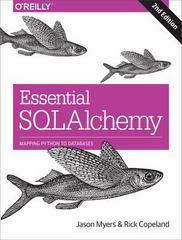Question
Given a range, removeRange() function deletes all keys in the BST which are in the given range. Complete the TODOs in the deleteNode() function in
Given a range, removeRange() function deletes all keys in the BST which are in the given range. Complete the TODOs in the deleteNode() function in BST.cpp. Do not need to complete the isValidBST() function in the BST.cpp.
#include
Node* BST:: createNode(int data) { Node* newNode = new Node; newNode->key = data; newNode->left = NULL; newNode->right = NULL; return newNode; }
BST::BST() {
}
/** parameterized constructor. It will create the root and put the data in the root. **/
BST::BST(int data) { root = createNode(data); cout<< "New tree created with "< /** Destructor **/ BST::~BST(){ destroyNode(root); } Node* BST::getRoot(){ return root; } /** This function will destroy the subtree rooted at currNode. Think about in what order should you destroy. POSTORDER. or right-left-root **/ void BST:: destroyNode(Node *currNode){ if(currNode!=NULL) { destroyNode(currNode->left); destroyNode(currNode->right); delete currNode; currNode = NULL; } } /* Prints a binary tree in a 2D fashion. Note: The image of the tree is left rotated by 90 degrees. */ void BST::print2DUtilHelper(Node *currNode, int space) { // Base case if (currNode == NULL) return; // Increase distance between levels space += COUNT; // Process right child first print2DUtilHelper(currNode->right, space); // Print current node after space // count printf(" "); for (int i = COUNT; i < space; i++) printf(" "); printf("%d ", currNode->key); // Process left child print2DUtilHelper(currNode->left, space); } void BST::print2DUtil( int space) { print2DUtilHelper(root, space); } //---------------------------- INSERT NODE IN THE TREE -------------------------------------- /** This function will add the data in the tree rooted at currNode. We will call this function from addNode. **/ Node* BST:: addNodeHelper(Node* currNode, int data) { if(currNode == NULL){ return createNode(data); } else if(currNode->key < data){ currNode->right = addNodeHelper(currNode->right,data); } else if(currNode->key > data){ currNode->left = addNodeHelper(currNode->left,data); } return currNode; } void BST:: addNode(int data) { addNodeHelper(root, data); cout< //-----------------------------------------PRINT TREE (INORDER TRAVERSAL)-------------------------------- /** This function will traverse the tree in-order and print out the node elements. printTree() function will call this function. **/ void BST:: printTreeHelper(Node* currNode){ if(currNode) { printTreeHelper( currNode->left); cout << " "<< currNode->key; printTreeHelper( currNode->right); } } void BST:: printTree(){ printTreeHelper(root); cout< //------------------------------------------------SEARCH A KEY------------------------------------------ /** This function will search the data in a tree We will call this function from searchKey. **/ Node* BST::searchKeyHelper(Node* currNode, int data){ if(currNode == NULL) return NULL; if(currNode->key == data) return currNode; if(currNode->key > data) return searchKeyHelper(currNode->left, data); return searchKeyHelper (currNode->right, data); } // This function will return whether a key is in the tree bool BST::searchKey(int key){ Node* tree = searchKeyHelper(root, key); if(tree != NULL) { return true; } cout<<"Key not present in the tree"< //--------------------------- Get Max and Min value Node ------------------------------------------------ Node* BST::getMaxValueNode(Node* currNode){ if(currNode->right == NULL){ return currNode; } return getMaxValueNode(currNode->right); } Node* BST::getMinValueNode(Node* currNode){ if(currNode->left == NULL){ return currNode; } return getMinValueNode(currNode->left); } //--------------------------- Delete a Node ------------------------------------------------ // This function deletes the Node with 'value' as it's key. This is to be called inside removeRange() function // SILVER TODO Complete the implementation of this function Node* BST::deleteNode(Node *currNode, int value) { if(currNode == NULL) { return NULL; } else if(value < currNode->key) { currNode->left = deleteNode(currNode->left, value); } else if(value > currNode->key) { currNode->right = deleteNode(currNode->right, value); } // We found the node with the value else { //TODO Case : No child if(currNode->left == NULL && currNode->right == NULL) { } //TODO Case : Only right child else if(currNode->left == NULL) { } //TODO Case : Only left child else if(currNode->right == NULL) { } //TODO Case: Both left and right child else { ///Replace with Minimum from right subtree } } return currNode; } // This function removes nodes with values in the range low and high. // You need to call deleteNode() function inside this function void BST::removeRange(int low, int high) { for(int i=low; i<=high; i++){ root=deleteNode(root,i); } } // ------------------------------------ Check for a Valid BST ------------------------------------------------ // GOLD TODO bool BST::isValidBST() { //TODO Uncomment below and Complete this function, you can use any logic (add a helper function if you want) return true; } /////////////////////////////////////////////////////////////////////////////////BST.hpp #ifndef BST_HPP #define BST_HPP using namespace std; struct Node{ int key; Node* left = NULL; Node* right = NULL; }; class BST{ private: Node* root; Node* createNode(int data); /** since root is a private member we need helper functions to access root for insertion, searching and printing. These helper functions is used for performing recursion **/ Node* addNodeHelper(Node*, int); void printTreeHelper(Node*); void print2DUtilHelper(Node *, int); Node* searchKeyHelper(Node*, int); Node* getMinValueNode(Node*); Node* getMaxValueNode(Node*); void destroyNode(Node *root); Node* deleteNode(Node*, int); public: Node* getRoot(); // Returns the root of the tree; void addNode(int); // function to insert a node in the tree. bool searchKey(int); // function to search a data in the tree void printTree(); //function to print the tree BST(); // default constructor BST(int data); // parameterized constructor ~BST(); // destructor void removeRange(int, int); void print2DUtil(int); bool isValidBST(); }; #endif /////////////////////////////////////////////////////////////////////////driver.cpp #include int main (int argc, char* argv[]){ cout<<"Creating tree"< tree.addNode(2); //left child to 5 tree.addNode(1); //left child to 1 tree.addNode(4); //right child to 2 tree.addNode(7); //right child to 5 tree.addNode(10); //right child of 7 tree.addNode(8); // left child of 10 tree.addNode(6); // left child of 7 cout<<"----------------Intial tree is ---------------"< cout<<"----------------Inorder traversal of the tree is ---------------"< cout<<"Enter the range for nodes which need to be removed"< //SILVER TODO - Complete the TODOs in deleteNode() function which is called within removeRange() function tree.removeRange(lower,upper); cout<<"----------------Final tree after deletion is ---------------"< cout<<"----------------Inorder traversal of the tree after deletion ---------------"< // GOLD TODO - Complete this function cout<< tree.isValidBST() << endl; }
Step by Step Solution
There are 3 Steps involved in it
Step: 1

Get Instant Access to Expert-Tailored Solutions
See step-by-step solutions with expert insights and AI powered tools for academic success
Step: 2

Step: 3

Ace Your Homework with AI
Get the answers you need in no time with our AI-driven, step-by-step assistance
Get Started


